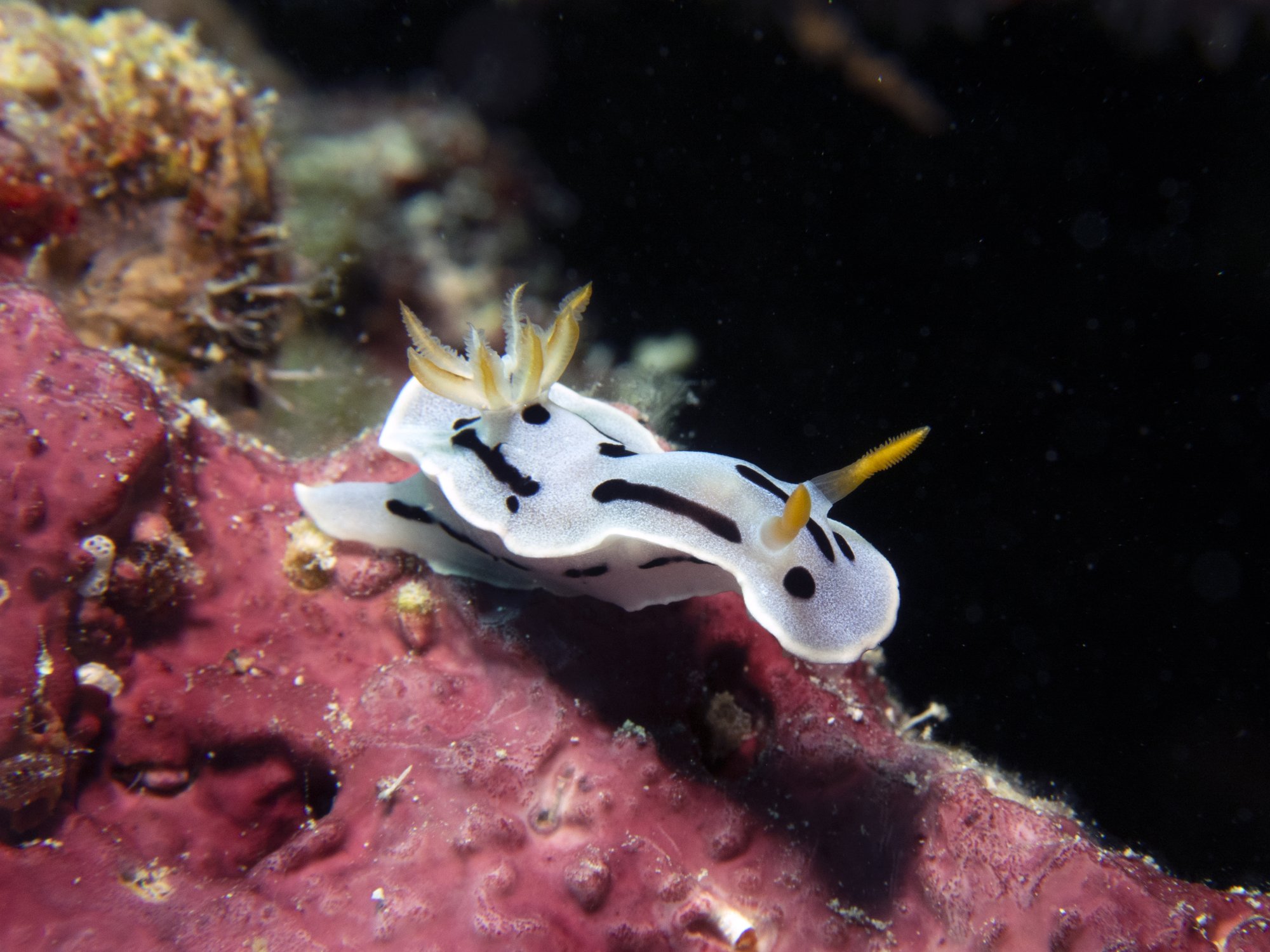Nudibranch
Colorful Slugs of the Sea
One of the most fascinating creatures of the sea, these small but mighty jelly-bodied, shell-less mollusks are part of the sea slug family. Nudibranchs inhabit ocean waters throughout the world, from the Southern Ocean to the Arctic and everywhere in between. Depending on the species, adult sizes can range from 0.25 to 12 inches. These soft-bodied gastropods derive their name from the Latin word Nudibranchia, meaning naked gills, which is why most have feathery gills and horns on their backs.
Nudibranchs are famous for their extravagant coloration and ornate patterns, making them a favorite sighting amongst divers. Three thousand known species of nudibranchs live in all saltwater habitats and depths from the intertidal zone to over 700m (2,300ft) deep; however, the largest variety resides on shallow, warm reefs. As benthic animals, these beautiful, oblong-shaped invertebrates are usually seen crawling along the substrate, grazing on algae, coral, anemones, sponges, and more. Check out the map below to see where you can find your favorite nudibranch species.
Dive Sites with this Animal View more on map

★★★★★ Mononaftis, Kreta
This is an ideal place for shore dives and is a confirmed diving park. Many ancient amphoras from Minoan civilization are seen here. You can hit several depths from a few meters to 40 meters deep. An ideal site for a try scuba and advanced level divers. It has a rocky bottom with Posidonia meadows and sand.

★★★★★ USAT Liberty Wreck
This is the only historical shipwreck in Bali, ranked #3 in the world for Wreck diving! The wreck is 25 meters form shore at a depth of 4 to 29 meters below the surface with most of it occuring in a shallow area. This dive site does not have strong currents, has clear water, and warm temperatures. Difficult entry!

★★★★★ La Cresta - Isla del Fraile
The Dutch cave is a small hollow located in the southern wall of the lower part of Cabo de Cope in Calabardina. One of three dives on the Isla del Fraile with no or very slight current, you will follow along the wall with a progressive drop from 5 to 25m.

★★★★☆ Kerkweg, Den Osse
Dive site Kerkweg in Den Osse is one of the most famous dive sites in Zeeland. Here you can dive from the jetty on oyster beds, an artificial reef of reefballs and many other hard substrate that is nicely overgrown. The maximum depth is about 30 metres, but you will find most life in the shallow water.

★★★★☆ Ullastre I
A 25-minute boat ride down the coast, in front of Calella, there are three underwater mountains called Los Ullastres. From beginner to advanced, there is a lot to see for every diver. Beautiful steep walls with gorgonians and lots of fish are just one example. A torch is recommended.

★★★★☆ Badia de Tamariu
The boat jetty and the entrance to this house reef are only 30 m from the base. The most beautiful part of the bay is reserved for divers and swimmers and secured by a buoy line. This beautiful house reef offers something for everyone down to a maximum depth of 15 m.
